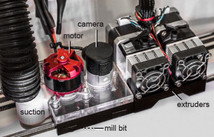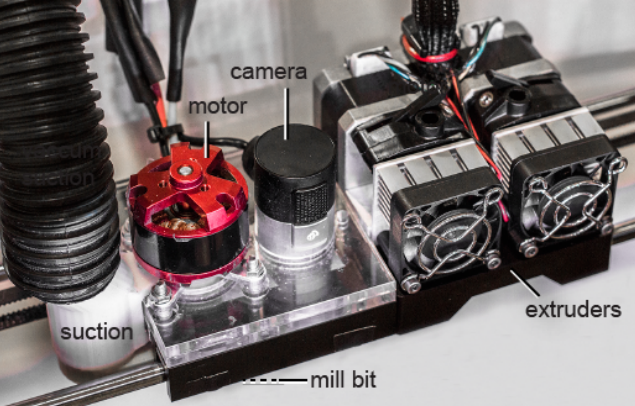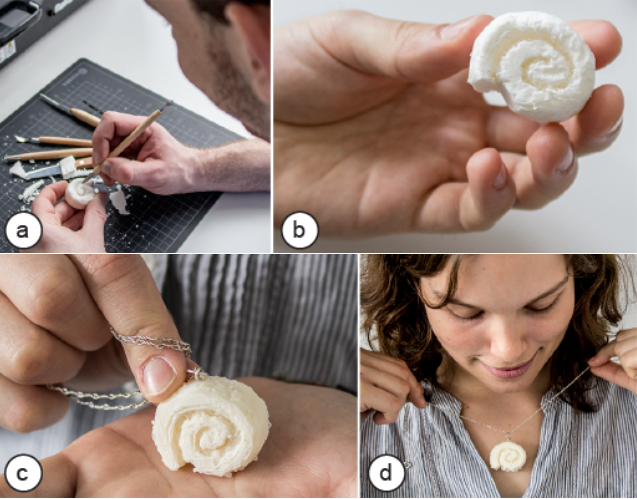/ News

Teleportation: Researchers Able to Relocate Objects Via Scanning & 3D Printing

Although 3D printing is only a blip on most intellectual property (IP) lawyers’ radars right now, I envision a time in the not too distant future where this all will change. It’s safe to guess that there are under one million 3D printers in homes and offices today. Considering the fact that we have a world population that’s north of 7 billion individuals, such a statistic barely moves the needle.
Fast forward a decade, and I am willing to bet that the number of 3D printers in existence is going to be an order of magnitude or more higher. With prices dropping, the number of applicable uses for both hobbyists and businesses expanding, and the technology progressing rapidly, the next decade will undoubtedly see this technology enter the mainstream. With the mainstream adoption of both 3D scanning and printing, we will see an array of issues emerge regarding IP security and protection, which will certainly need to be resolved.
A team of researchers at the Hasso Plattner Institute, in Brandenburg, Germany, including Stefanie Mueller, Martin Fritzsche, Jan Kossmann, Maximilian Schneider, Jonathan Striebel, and Patrick Baudisch, seem to have come up with a process of destructive scanning, encryption, and 3D printing that could perhaps solve some of these issues. The process, which is enabled by a machine called Scotty, could ensure that only one of a certain object exists when transferring it to another location.
Currently if I purchased an object and wanted to share it with a friend or colleague, I could scan that object’s surface, turn the scan into a 3D printable .stl file, and then email it across the world if I choose to. The person on the receiving end could then download the file, and if they have access to a 3D printer print it out within minutes or hours.
In the future, there will be laws enacted preventing patented designs from being shared; however, what if you simply wanted to transfer ownership of that design/object?

This is where Scotty comes into play. Not only is Scotty able to more thoroughly scan the interior of an object via a destructive scanning process, but at the same time that it’s destroying the original artifact a copy is being sent to another location and encrypted to ensure that this copy is only accessible at the receiving computer, where it can then be refabricated via a 3D printer.
How Scotty works is quite fascinating. The machine consists of an off-the-shelf 3D printer, like a MakerBot Replicator 2X, to which is added a 3-axis milling machine, camera, and microcontroller for encryption. A Raspberry Pi is used for the brains of the unit, while an Arduino controls the milling machine. When a user wishes to relocate an object, they first must dip it into a black dye. The dye is used so that the camera can easily contrast each layer as it is sliced. They then place the object within the sender unit, and hit the ‘Relocate’ button. The destruction and digitalization process now begins as the machine shaves off a single layer of the original object, scans it, encrypts it, and sends it to the receiving unit, where it can be printed out almost immediately. This process continues layer-by-layer until the original object is completely destroyed/scanned, and the new object is fabricated.

The Original object (top), the teleported object (bottom)
In essence, Scotty will accomplish two main tasks. First, it will keep personal objects unique. For instance if you were to hand-make a gift for a loved one and wish to send it to them via this system, Scotty will guarantee that it remains one-of-a-kind, keeping intact “an important aspect that emphasizes the intimate relationship between sender and receiver.”
Secondly, as 3D scanning and printing technology is bound to progress to a point where nearly any object can quickly be replicated using multiple materials, the sale of products online via third party website such as Ebay will change immensely. What if Ebay were to allow for digital delivery of physical goods, even if a particular product is protected by a patent or copyright? In order to legally take part in such a sale, the original object would need to be destroyed as the copied object is being built. Scotty would enable such a process, ensuring that intellectual property remains protected.
In today’s current environment, perhaps such a process is not yet needed, but if you look ahead a decade or two to a time when 3D printers are much more capable, as well as prevalent, Scotty could certainly be a system which plays an important role in the security and protection of IP.
Let’s hear your thoughts on this machine in the Scotty Forum thread on 3DPB.com. Check out the video below in addition to some further images:
Source: http://3dprint.com/38799/scotty-3d-prnt-teleport/
/ About us
Founded by Russian entrepreneur Dmitry Itskov in February 2011 with the participation of leading Russian specialists in the field of neural interfaces, robotics, artificial organs and systems.
The main goals of the 2045 Initiative: the creation and realization of a new strategy for the development of humanity which meets global civilization challenges; the creation of optimale conditions promoting the spiritual enlightenment of humanity; and the realization of a new futuristic reality based on 5 principles: high spirituality, high culture, high ethics, high science and high technologies.
The main science mega-project of the 2045 Initiative aims to create technologies enabling the transfer of a individual’s personality to a more advanced non-biological carrier, and extending life, including to the point of immortality. We devote particular attention to enabling the fullest possible dialogue between the world’s major spiritual traditions, science and society.
A large-scale transformation of humanity, comparable to some of the major spiritual and sci-tech revolutions in history, will require a new strategy. We believe this to be necessary to overcome existing crises, which threaten our planetary habitat and the continued existence of humanity as a species. With the 2045 Initiative, we hope to realize a new strategy for humanity's development, and in so doing, create a more productive, fulfilling, and satisfying future.
The "2045" team is working towards creating an international research center where leading scientists will be engaged in research and development in the fields of anthropomorphic robotics, living systems modeling and brain and consciousness modeling with the goal of transferring one’s individual consciousness to an artificial carrier and achieving cybernetic immortality.
An annual congress "The Global Future 2045" is organized by the Initiative to give platform for discussing mankind's evolutionary strategy based on technologies of cybernetic immortality as well as the possible impact of such technologies on global society, politics and economies of the future.
Future prospects of "2045" Initiative for society
2015-2020
The emergence and widespread use of affordable android "avatars" controlled by a "brain-computer" interface. Coupled with related technologies “avatars’ will give people a number of new features: ability to work in dangerous environments, perform rescue operations, travel in extreme situations etc.
Avatar components will be used in medicine for the rehabilitation of fully or partially disabled patients giving them prosthetic limbs or recover lost senses.
2020-2025
Creation of an autonomous life-support system for the human brain linked to a robot, ‘avatar’, will save people whose body is completely worn out or irreversibly damaged. Any patient with an intact brain will be able to return to a fully functioning bodily life. Such technologies will greatly enlarge the possibility of hybrid bio-electronic devices, thus creating a new IT revolution and will make all kinds of superimpositions of electronic and biological systems possible.
2030-2035
Creation of a computer model of the brain and human consciousness with the subsequent development of means to transfer individual consciousness onto an artificial carrier. This development will profoundly change the world, it will not only give everyone the possibility of cybernetic immortality but will also create a friendly artificial intelligence, expand human capabilities and provide opportunities for ordinary people to restore or modify their own brain multiple times. The final result at this stage can be a real revolution in the understanding of human nature that will completely change the human and technical prospects for humanity.
2045
This is the time when substance-independent minds will receive new bodies with capacities far exceeding those of ordinary humans. A new era for humanity will arrive! Changes will occur in all spheres of human activity – energy generation, transportation, politics, medicine, psychology, sciences, and so on.
Today it is hard to imagine a future when bodies consisting of nanorobots will become affordable and capable of taking any form. It is also hard to imagine body holograms featuring controlled matter. One thing is clear however: humanity, for the first time in its history, will make a fully managed evolutionary transition and eventually become a new species. Moreover, prerequisites for a large-scale expansion into outer space will be created as well.
Key elements of the project in the future
• International social movement
• social network immortal.me
• charitable foundation "Global Future 2045" (Foundation 2045)
• scientific research centre "Immortality"
• business incubator
• University of "Immortality"
• annual award for contribution to the realization of the project of "Immortality”.



 LinkedIn
LinkedIn
 LiveJournal
LiveJournal
 Google
Google
 Twitter
Twitter
 Facebook
Facebook
 Я.ру
Я.ру
 ВКонтакте
ВКонтакте
 Mail.ru
Mail.ru